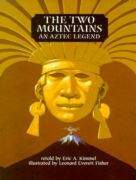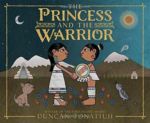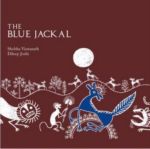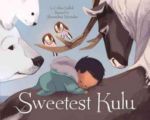
The simple story, written in Cree and English and accompanied by rich acrylic illustrations, shows the patience, love and humor involved as three generations accommodate one another on a family outing.

The simple story, written in Cree and English and accompanied by rich acrylic illustrations, shows the patience, love and humor involved as three generations accommodate one another on a family outing.

A leader among the Lakota during the 1860s, Chief Red Cloud deeply opposed white expansion into Native American territory. He rejected treaties from the U.S. government and instead united the warriors of the Lakota and nearby tribes, becoming the only Native American to win a war against the U.S. Army. Despite his military successes, Red Cloud recognized that continued conflict would only bring destruction to his people.

Kamanya believes in the shaman’s wisdom about the healing properties of plants found in the Amazon rain forest and hopes one day to be a healer for his people.

Two married gods disobey their orders and visit Earth, are turned into mortals as punishment, and eventually become mountains so that they will always stand side by side.

Thunder Boy Jr. is named after his dad, but he wants a name that’s all his own. Just because people call his dad Big Thunder doesn’t mean he wants to be Little Thunder. He wants a name that celebrates something cool he’s done, like Touch the Clouds, Not Afraid of Ten Thousand Teeth, or Full of Wonder. But just when Thunder Boy Jr. thinks all hope is lost, he and his dad pick the perfect name…a name that is sure to light up the sky.

Princess Izta had many wealthy suitors but dismissed them all. When a mere warrior, Popoca, promised to be true to her and stay always by her side, Izta fell in love. The emperor promised Popoca if he could defeat their enemy Jaguar Claw, then Popoca and Izta could wed. When Popoca was near to defeating Jaguar Claw, his opponent sent a messenger to Izta saying Popoca was dead. Izta fell into a deep sleep and, upon his return, even Popoca could not wake her. As promised Popoca stayed by her side. So two volcanoes were formed: Iztaccíhuatl, who continues to sleep, and Popocatépetl, who spews ash and smoke, trying to wake his love.

And climbing to the volcano across the goat belly fat with long beards, witch, Devil’s live. People and stories depicting the natural ties. The folklore of southernmost South America, Patagonia.

Juno the jackal is suddenly treated like a king after he inadvertently dyes his fur blue.

Amidst a complicated history of mistreatment by and distrust of the American government, the Navajo people–especially bilingual code talkers–helped the Allies win World War II.

A lyrical lullaby imbued with traditional Inuit beliefs, this bedtime poem written by internationally acclaimed Inuit throat singer Celina Kalluk describes the gifts bestowed upon a newborn baby by all the animals of the Arctic.